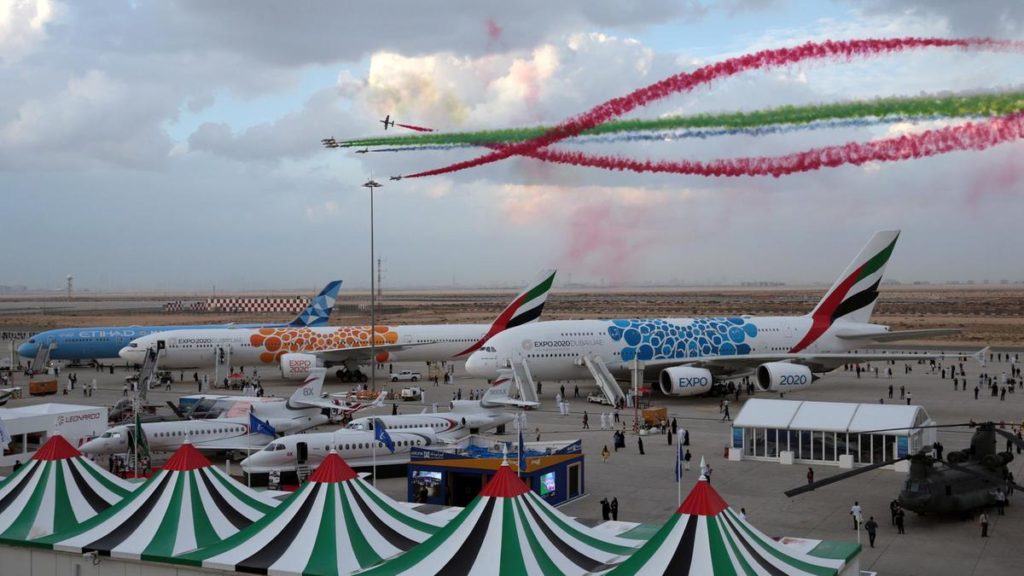The 2019 Dubai Airshow took place last week at the World Center Airport in the UAE’s flagship Emirate. In the five days from the 17th to the 21st of November, aircraft manufacturers and airlines from all over the world came to the Arabian desert to sit down and talk business. Commitments, orders, and deals with a total value of USD 54.5 billion were signed as planes took to the sky in an awe-inspiring air show.
The first edition of the Dubai Airshow was inaugurated in 1986. At the time, aviation was still taking baby steps and the industry was not as colossal as it is today. The technological revolution that came with the dawn of the new millennium saw aviation grow into a trillion-dollar industry. This change would not have been possible without the Dubai Airshow, a leading exhibition showcasing the latest and greatest in the realm of aviation.
Although the Paris Airshow still sits on the throne as the world’s largest aviation exhibition, the deals made in Dubai competed with those made in the French capital, showing a shift from the traditional centers of power. The two largest aircraft manufacturers in the world, Boeing and Airbus, understand how vital the MENA region is for commercial aviation. The UAE’s flagship airline, Emirates, made an order for Boeing and Airbus planes that constituted a staggering USD 25 billion; only USD 10 billion less than the total orders Boeing and Airbus secured at the Paris Airshow.
Boeing has projected that the commercial aviation market in the Middle East will grow to be worth more than USD 1.5 trillion over the next 20 years, becoming the world’s fastest-growing market.
Geographically, the MENA region is at the center of three major continents, with statistics showing that 85% of all people living on earth are an eight-hour flight away from any destination in the MENA region; this region is what will produce 70% of the world’s total economic growth in the next two decades.
On the other hand, Airbus predicts that in the next 20 years, the number of Middle Eastern passengers will grow at a faster rate than the rest of the world. Furthermore, the aircraft manufacturers think that by 2040, the MENA region will have 11 Aviation Mega Cities, a significant upgrade from the current five.

In Dubai, the world sat and watched as major airlines made peace with Boeing over their 737 Max jet model, which was grounded in many parts of the world after two horrifying accidents. The company vowed to work on the issues, and now, nine months later, it seems that the aviation community’s faith has been renewed.
The shift of the industry towards the Middle East has been inevitable since the 2017 Dubai Airshow, and this year’s airshow proves that its growth is even greater than originally predicted.




